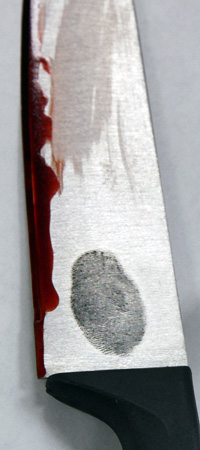Home | Glossary | Resources | Help | Contact Us | Course Map
Archival Notice
This is an archive page that is no longer being updated. It may contain outdated information and links may no longer function as originally intended.
Time Required to Perform Laboratory Analysis
Step 1: Screening Process, cont.
Since more than one type of evidence may be located on an exhibit, other laboratory sections may become involved in the examination. For example, the laboratory may determine that the item must first be examined by the latent prints section to avoid damage or loss of potentially important evidence that may occur during the course of examination by the biology section. This situation may be immediately obvious upon receipt of the evidence or may be determined only during the biologist's examination.
The screening process may be as straightforward as a visual examination, or it may require the use of specialized equipment such as microscopes and alternate light sources and/or chemical tests.
Additional Online Courses
- What Every First Responding Officer Should Know About DNA Evidence
- Collecting DNA Evidence at Property Crime Scenes
- DNA – A Prosecutor’s Practice Notebook
- Crime Scene and DNA Basics
- Laboratory Safety Programs
- DNA Amplification
- Population Genetics and Statistics
- Non-STR DNA Markers: SNPs, Y-STRs, LCN and mtDNA
- Firearms Examiner Training
- Forensic DNA Education for Law Enforcement Decisionmakers
- What Every Investigator and Evidence Technician Should Know About DNA Evidence
- Principles of Forensic DNA for Officers of the Court
- Law 101: Legal Guide for the Forensic Expert
- Laboratory Orientation and Testing of Body Fluids and Tissues
- DNA Extraction and Quantitation
- STR Data Analysis and Interpretation
- Communication Skills, Report Writing, and Courtroom Testimony
- Español for Law Enforcement
- Amplified DNA Product Separation for Forensic Analysts


